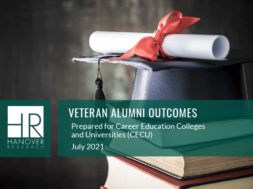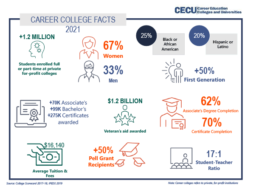
Wired for College: How Digital Natives are Changing Higher Education
By Diana J. Martin, PhD, Professor, Keiser University Graduate School, Director of the KU Teaching and Learning Program
“Digital Natives,” the term describing those who since birth have been immersed in a world shaped by technology, describes the majority of today’s college students. Though most leaders with extensive experience in education are better classified as what researcher Marc Prensky (2001) calls “digital immigrants,” both those who have grown up with cyber-technology and those who have eased into it later in life, find that the web has not only transformed education, it has changed the way students think.
DOWNLOAD ARTICLECyberpsychology is particularly important as it describes the most rapidly growing segment of students in postsecondary education: online learners.
Enrollments in online college courses now total more than 7.1 million and the numbers are setting new records each year (Allen & Seaman, 2014). Recently the Babson Survey Research Group reported that more than 70 percent of academic leaders describe distance learning as important to the future of their institution (Allen & Seaman, 2014). Do these online learners think and behave differently than the classroom based pupils of the past? What do we know about the net-generation and how can career college leaders prepare for the new educational platforms these students require? When it comes to implementing strategies for enhancing student recruitment, retention and achievement, recent psychological and sociological research can provide valuable insights about what online course participants need to succeed.
One surprising finding, for example, is that today’s students do not know as much as we might think about new technologies.
In one recent investigation, a team of researchers found that students were familiar with entertainment technology but not well-informed about web-based information and communications. The majority of the more than 1000 learners studied were comfortable using technology to enjoy music or to play electronic games but were not familiar with communication technology designed for the kind of information gathering needed for educational activities. In contrast, teachers were found to be more “tech savy” when it came to practical application of online resources. (Campbell, Coster, Hui-Yamm, Longhurst & Wang, 2014) The instructors were more able to use technology for problem solving and for learning opportunities. A functional interpretation of this is that online classes need to provide students with opportunities to develop better skills in navigating the web. Rather than limit online assignments to research for the production of written papers, teachers should help students focus on the use of technology for problem solving and for the cultivation of creative inquiry. The study organizers conclude “students may be fluent in using entertainment or communication technologies, but they need guidance to learn how to use these technologies to solve sophisticated cognitive problems” (Wang et al, 2014, p.18).
Despite students’ needs to learn more about its use, digital education is proving to be a powerful and growing force.
A study published in May of this year reviewed over three hundred studies of online education and reported findings that online education was as effective as, or better than, traditional face-to-face instruction (University of Texas at Arlington, May 2015).
Researchers have also found that successful online educational programs must meet a new type of expectation. Unlike previous generations, millennial students say they want classes that are not solely instructive; they are also looking for a learning environment that offers encouragement and assistance. A study published by the National Communication Association (Zachary, Goldman & Goodboy, 2014) describes the importance of the teacher’s role in helping students believe they are connected to classroom activities. Demonstrating an interest in the student and promoting interactive activities are strategies that the researchers say will promote achievement and retention. Their conclusions underscore previous findings that millennial students “expect a classroom environment that is emotionally supportive” (Zachary et al, 2014, p.1). Supportive learning environments demonstrate encouragement from faculty and a feeling of camaraderie among students. Students who experience this sense of connection with the virtual community tend to persist in their educational programs (Ivankova & Stick, 2005). Faculty can create such an optimal online learning environment by providing prompt and supportive feedback, promoting meaningful interaction among students, and ensuring responsive and meaningful communications (Ivwnkova & Stick, 2005). Practical application of these ideas includes regular and encouraging phone and online messages. Faculty can be supportive in thread discussions through personalized communications; responding to a student by name and focusing on a student’s specific stated interests are simple but effective methods that demonstrate authentic interest. Student interaction and social association can be nurtured through group projects, class blogs, peer reviews, and peer mentoring. Course discussions with questions that evoke interaction also contribute to a sense of community in the course. For example, helpful dialog can be generated by posting questions such as “Which student post this week helped you best understand this week’s readings? Please explain.”
Published findings by researchers in Finland (Cattaneo & Hämäläinen, 2015) demonstrate that these changing student perspectives are affecting the role of the online instructor. Enhanced accessibility to almost limitless knowledge has shifted the teacher’s function away from that of a lecturer who presents information.
The new educator enhances students’ abilities to engage in exploration of information sources, participate in collaborative problem solving and be actively involved in processing knowledge.
After reviewing nationally recognized programs, the Hanover Research Council (2009) has identified a number of “best practice” online teaching strategies. They found that excellent teachers structure interactions designed to foster student-generated content. Student led discussions, peer reviewed assignments and student evaluation of web- based resources proved to be successful approaches. What researchers termed “the interactivity” of learners helped define a new role for instructors; effective online teachers serve as facilitators. In online discussions, for example, educators can identify common themes, clarify consensus, draw attention to potential limitations and acknowledge student contributions (Hanover Research Council, 2009).
Not only are the roles of teachers changing, so are the roles of students. Important to the success of online education is “social presence” defined as the degree a student feels connected and genuinely involved with others in the learning environment. Simply stated, students who feel they are valued as individuals and are recognized as part of the learning group develop a personal investment in their online course. They tend to remain enrolled. Related to this is the idea that virtual realities can be psychologically interpreted as actual realities (Lee, 2004). The social and intellectual world of the digital learning community can become a very “real” component of an online student’s life.
Some educators have taken this a step further to explore ideas that may someday shape the future of online learning. Though limited, there is research describing student interactions in three dimensional cyber worlds in which participants, like the characters in the fictional film Avatar, take on the roles of representational characters who as avatars, interact with others in the class (Wang & Lockee, 2010).
Such softening of the lines between cyber space and more concrete realties can illustrate the changes taking place in education. More students are taking online courses because as Digital Natives they have grown up in a world enriched by virtual reality. Though they still have much to learn about the information available on the internet, today’s students are comfortable with the idea of technology and are signing up for online courses in record numbers. This new kind of learner views education differently than traditional pupils of the past. Millennial students best achieve in learning environments that reflect the kinds of social interactions they have experienced throughout their lives. Connections through social networking are important to their everyday interpretation of experience. They view classes as interactive settings and they expect the kinds of access to information, asynchronous communications, and group support found in the types of social media that define their daily interactions with others.
A century ago, American educator John Dewey warned, “If we teach today’s students as we taught yesterday’s, we rob them of tomorrow” (Dewey, 1915).
As educators prepare for the next one hundred years, rapidly evolving technologies are demanding transformation of the ways we teach. Current information describing today’s students can chart the course to success.
References
Allen, E. I., & Seaman, J. (January, 2014). Babson Research Group. Retrieved March 25, 2014, from Grade change: Tracking online education in the United States: http://sloanconsortium.org/publications/survey/grade-change-2013
Campbell T., Coster D, Hsu H., Longhurst, M. & Wang, S, An investigation of middle school science teachers’ and students’ use of technology inside and outside of classrooms: considering whether digital natives are more technology savvy than their teachers. Educational Technology Research and Development, 2014; DOI: 10.1007/s11423-014-9355-4
Cattaneo, A & Hämäläinen, R, New TEL Environments for Vocational Education – Teacher’s Instructional Perspective. Vocations and Learning, 2015; DOI: 10.1007/s12186-015-9128-1
Dewey, J. (1915). The school and society. Chicago, Ill: The University of Chicago Press.
Edirisingha, P., Nie, M., Pluciennik, M., & Young, R. (2009). Socialisation for learning at a distance in a 3-D multi-user virtual environment. British Journal Of Educational Technology, 40(3), 458-479. doi:10.1111/j.1467-8535.2009.00962.x
Hanover Research Council. (2009, July). Hanover Research. Retrieved August 8, 2015, from Best Practices in Online Teaching Strategies: http://www.uwec.edu/AcadAff/resources/edtech/upload/Best-Practices-in-Online-Teaching-Strategies-Membership.pdf
Ivankova , N. V., & Stick, S. L. (2005). Collegiality and community-building as a means for sustaining student persistence in the computer-mediated asynchronous learning environment. Online Journal of Distance Learning Administration, 8(3).
Lee, K. M. (2004). Presence, explicated. Communication Theory, 14(1), 27-50. Prensky, M. (2001) Digital natives, digital immigrants. On the Horizon, MCB University Press, Vol. 9 No. 5
University of Texas at Arlington. “Comprehensive new study provides foundation for future of digital higher education.” Science Daily 1 May 2015. <www.sciencedaily.com/releases/2015/05/150501095959.htm>.
Wang, F. & Lockee, B.B. (2010). Virtual Worlds in Distance Education: A Content Analysis Study. Quarterly Review of Distance Education, 11(3), 183-186.
Zachary W. , Goldman, A., Goodboy, K. Making Students Feel Better: Examining the Relationships between Teacher Confirmation and College Students’ Emotional Outcomes. Communication Education, 2014; 63 (3): 259 DOI: 10.1080/03634523.2014.920091

Diana J. Martin is a faculty member at Keiser University Graduate School and is Director of the KU Teaching and Learning Program. She serves on the KUCCEL Research Team.
Professor Martin holds a Ph.D. from the University of South Florida, a M.Ed. from Florida Atlantic University, and she graduated with honors with a B.A. from the University of Florida.
Since the beginning of her career as Director of Admissions for a small independent sector women’s college, she has held educational leadership positions at both private and state universities. Her administrative experience includes three appointments as University Vice President, two as Foundation Executive Director, and also an appointment as a community college district executive director.
Her interest in providing educational opportunities for students is demonstrated by her service on a number of nonprofit boards and her extensive work in engendering fiscal support for colleges and universities. She also has conducted successful educational leadership seminars and executive board training workshops. Her professional publications and presentations have focused on the future of online education and on developing innovative strategies to build student success.
Dr. Martin has been elected to Phi Kappa Phi Honor Society and holds professional membership in the Association of Teacher Educators, American Educational Research Association, Phi Delta Kappa International and the American Counseling Association.
Contact Information: Diana J. Martin, PhD // Professor, Keiser University Graduate School // Director of the KU Teaching and Learning Program // 706-974-3751 // dimartin@keiseruniversity.edu










